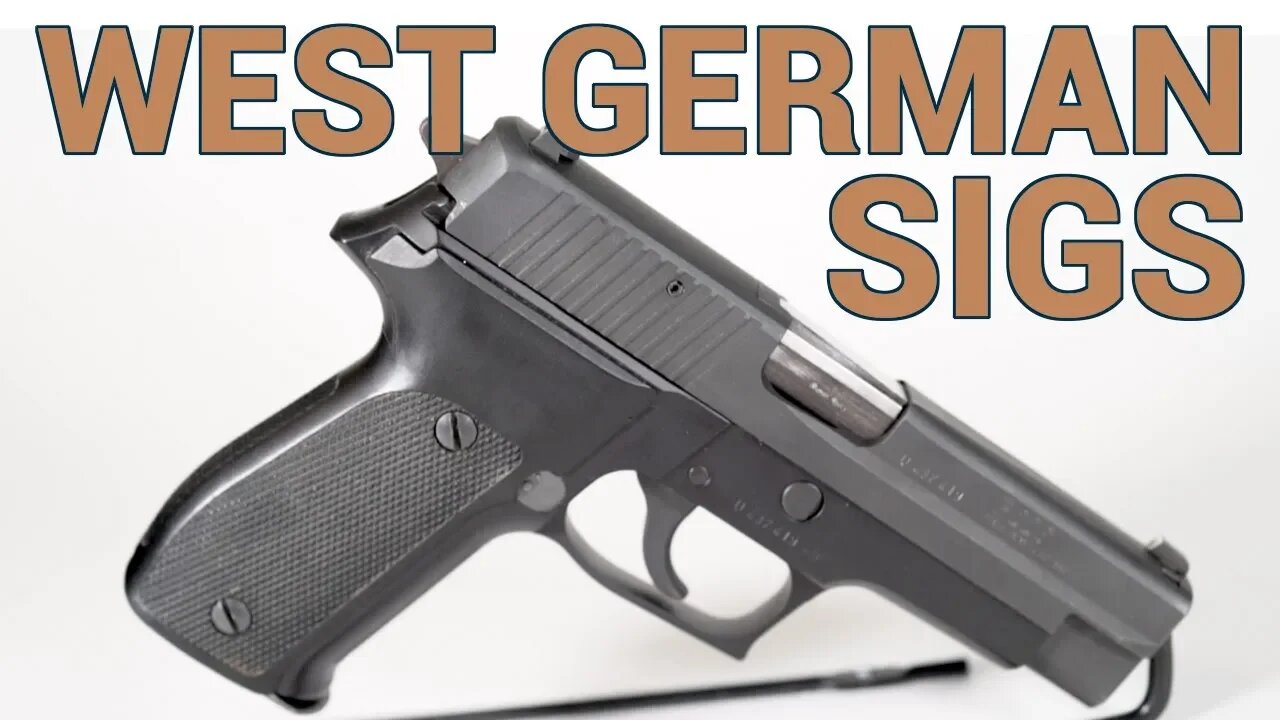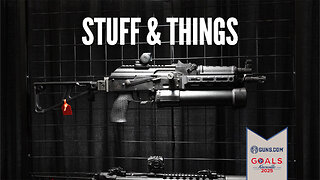Premium Only Content

Classic West German Sig Sauer P-Series Pistols
Hailing from a time when there were a pair of German states, West German-made Sig Sauer pistols are increasingly collectible.
The Sig Sauer most commonly encountered today in the U.S. is typically made in a series of factories in New Hampshire, where the company has long put down American roots. In fact, according to data from federal regulators, the company produced a whopping 536,636 American-made pistols in 2017 alone, going on to export about a third of those overseas.
However, when you turn back the clock some 45 years, it was a much different supply pipeline. In 1976, SIG (Schweizerische Industrie Gesellschaft) of Switzerland formed a partnership with J.P. Sauer & Sohn of West Germany to begin marketing their guns better overseas. This led to the “Sig Sauer” name.
Among their first exports to the U.S. were the 9mm Sig Sauer P220, which had been adopted by the Swiss Army as the P75 pistol.
These early West German-marked single-stacks were typically shipped over with lanyard rings and European-style heel release magazine latches, features that weren’t changed on American-bound Sigs until later. A lot of those early guns were marketed as Browning BDAs in .45ACP.
By 1985, Sig Sauer was producing a new double-stack pistol that otherwise had much the same layout as the 9mm P220– the 15+1 round capacity P226. That gun was a contender in the U.S. Army pistol trials to replace the venerable M1911A1 .45ACP, although Uncle Sam went with the Beretta 92 in the end, reportedly over cost issues.
In the meantime, the P226 was released on the U.S. commercial market and soon became a hit with both consumers and law enforcement customers. With its 4.4-inch barrel and choice of DA/SA or DAO actions, later augmented by the DAK trigger system, the 9mm was also marketed in .357 SIG and .40S&W. Today, dozens of variants of the P226 are in circulation and the gun is still very much in production– now in the U.S.
Vintage “West German” marked P226s, besides their stampings, have several differences from today’s more current offerings. This includes almost pebble-style plastic grips and a distinctive pinned-in breechblock assembly. Further, the slide of those early guns has a different profile from today’s P226 offerings.
While Germany was reunified in 1990 after the Berlin Wall came down and the “West” was officially dropped moving forward, some guns continued to come into the U.S. with the legacy markings for a few years.
Still, if you are looking for a well-made “Old World” gun with a bit of history while still keeping today’s styling, it is hard to beat a nice German Sig Sauer P-series pistole.
-
 3:31
3:31
Guns.com
12 days ago $0.33 earnedGOALS 2025: New at Stuff & Things
6201 -
 LIVE
LIVE
daniellesmithab
1 hour agoAlberta Next: Lloydminster Town Hall
80 watching -
 LIVE
LIVE
LFA TV
13 hours agoLFA TV ALL DAY STREAM - WEDNESDAY 8/27/25
951 watching -
 1:04:36
1:04:36
BonginoReport
3 hours agoDems Play Blame Game In Wake Of Tragedy - Nightly Scroll w/ Hayley Caronia (Ep.121) - 08/27/2025
100K38 -
 1:06:26
1:06:26
TheCrucible
3 hours agoThe Extravaganza! EP: 28 (8/27/25)
91.5K4 -
 1:30:22
1:30:22
Kim Iversen
4 hours agoNetanyahu Says Armenian Genocide Was Real — But Gaza Deaths Are A “Mishap"
40.1K100 -
 1:08:47
1:08:47
vivafrei
3 hours agoAnother "Trans" Mass Shooter? Rampage Jackson Keeps Digging? Democrats are Just Awful AND MORE!
33.2K42 -
 LIVE
LIVE
Quite Frankly
6 hours ago"Planet Chaos, Life on Mars, Open Lines" ft. Oppenheimer Ranch Project 8/27/25
609 watching -
 LIVE
LIVE
The Mike Schwartz Show
7 hours agoTHE MIKE SCHWARTZ SHOW Evening Edition 08-27-2025
3,910 watching -
 1:34:24
1:34:24
Redacted News
4 hours agoLIVE: Minnesota School Shooter’s Shocking Motive Revealed – Plus Trump Targets Soros w AG Ken Paxton
140K149